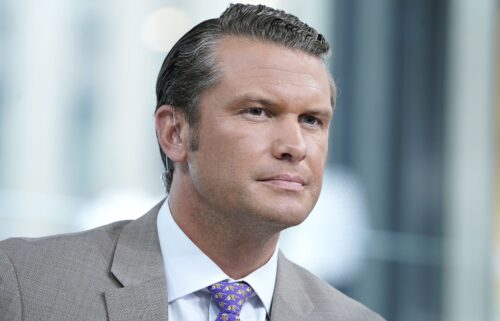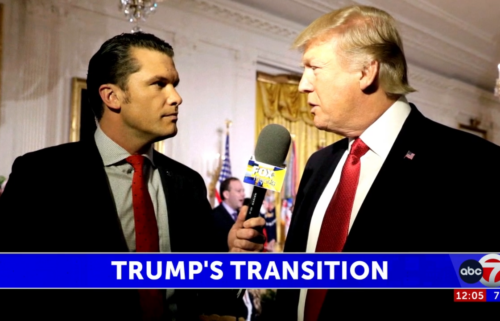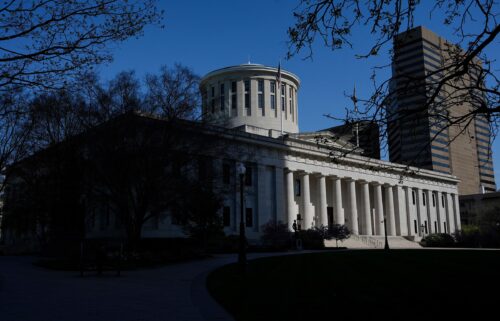Former Army secretary says DC National Guard had no plan ahead of Capitol riot beyond local traffic control
Former Army Secretary Ryan McCarthy told a House panel on Tuesday that the National Guard only planned to deal with traffic in Washington, DC, the day the deadly US Capitol insurrection occurred, with “no contingency” in place if things escalated in the city, according to a copy of his prepared testimony obtained by CNN.
But McCarthy also told Congress that alternate plans would only have happened if the US Capitol Police or local authorities in Washington requested it.
“114 citizen soldiers … were spread out over 20 city blocks … with no contingency or recall plan for a change of mission in place,” his statement reads.
A relatively small number of guardsmen were in DC on January 6 to assist the city’s police force with traffic control in an effort to allow the local authorities to focus on anything related to demonstrations planned in the city. McCarthy’s statement underscores the lack of preparedness on the part of the government and federal law enforcement agencies to aggressively respond to a crisis that day, which ultimately saw a violent attack on the Capitol that resulted in the death of five people, including a US Capitol Police officer.
The comments from the former official come the same day acting US Capitol Police chief Yogananda Pittman told the same committee that the “department failed to meet its own high standards” on January 6. Pittman, who apologized on behalf of her department, also told the panel the department was aware of a “strong potential for violence” targeting Congress and did not take the appropriate steps to prevent it.
Maj. Gen. William J. Walker, the commanding general of the Washington National Guard, meanwhile, is claiming his authority was restricted by the Department of Defense before the Capitol riot, a move he says prevented his forces from arriving to the attack sooner than they did, The Washington Post reported earlier Tuesday.
Walker told the Post that authority he usually has to dispatch troops in dire situations as well as other powers were stripped from him ahead of the riot. That meant “he couldn’t immediately roll out troops when he received a panicked phone call” from the US Capitol Police chief warning him that a crowd of then-President Donald Trump’s supporters were about to breach the iconic building in an attack.
“All military commanders normally have immediate response authority to protect property, life, and in my case, federal functions — federal property and life,” Walker told the Post. “But in this instance I did not have that authority.”
Asked by the newspaper how quickly his troops could have been able to arrive to the Capitol, which sits near the DC National Guard’s headquarters, Walker said: “With all deliberate speed — I mean, they’re right down the street.”
In the days leading up to the protest, defense officials pulled Walker’s ability to deploy the 40-person quick response force (QRF) on his own, requiring instead that he seek the Army secretary’s approval. In a letter from McCarthy to the Department of Justice written two days before the riot, he said the QRF could only be deployed as a last resort.
This decision was made in the days before January 6 during the planning for what was expected to be a far less violent protest. If deployed, the QRF was only able to help with traffic control and crowd management, which were the tasks approved for Guardsmen on the street.
Walker’s call with former US Capitol Police Chief Steve Sund was at 1:49 p.m. that day, according to an official timeline of events from the defense secretary, which is 15 minutes after the Army secretary spoke to the DC mayor. The DC National Guardsmen who were already on the streets for traffic control were pulled a short time later to refit with riot gear.
On Monday, Walker acknowledged that he does not have the authority to deploy troops on his own, even with a direct request from the mayor’s office.
“Since I’ve been in charge, we’ve been very responsive to (DC Mayor Muriel Bowser). She provides a request, it comes to me. I conduct mission analysis. I send it to the Secretary of the Army for his approval,” Walker said, speaking alongside the head of the National Guard Bureau Gen. Daniel Hokanson and acting Army Secretary John Whitley.
Defense officials have acknowledged that the “overly bureaucratic” process required to activate and deploy the DC National Guard consumed valuable time as the riot was unfolding on Capitol Hill.
“There’s too many people that are involved with the decision, and ultimately no one, one single person responsible,” McCarthy told CNN last week, adding, “It makes it very difficult and slow in the response.”
Pentagon officials have repeatedly denied accusations that it denied or delayed the deployment of additional troops as the riot worsened, though McCarthy said the response was hampered by an “archaic system.”
The comments from Walker add to the already complicated chain of events from January 6, and could face intense scrutiny by Congress during any potential investigations into the attack and the government’s preparations ahead of a rally held by Trump that day in which he, along with several others, incited the attack on the Capitol.
This story has been updated with additional reporting.




